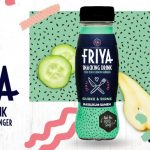Designing the consumer survey
Consumers’ perception and use of fabric softeners Who uses fabric softeners and fabric conditioners today, who doesn’t, and why?
What is the overall perception of fabric softeners from the consumer perspective?
Which claims compel a consumer to purchase one product versus another?
And are consumers willing to pay more for new, as yet unestablished claims?
In short, what will get a consumer to select one fabric softener over another off the shelf?
To find out, we partnered with Conjoint.ly to survey over 1,900 respondents across Spain, Germany and the UK.
The test subjects were divided into those who use fabric softeners regularly, and those who use these products infrequently or not at all.
These samples were carefully chosen to represent the respective national populations in terms of gender, age, marital status, number of children, and level of education.
This summary report looks at the key takeaways from the survey.
When asked how often they used fabric softener, almost 73% of the respondents reported using fabric softener in more than 50% of washes. From the survey, we found that consumers use fabric softener on cotton most frequently, with wool, polyester, and linen following with the next highest usage levels.
When polled as to the types of garments on which respondents applied fabric conditioners, almost half reported that they use softener on all garment types, with usage highest on towels, bed linens, and sweaters.

Skeptical or simply unaware?
When the non-users of fabric softener were asked why they do not use these products more often or at all, environmental and allergic concerns were frequently cited. Additionally, the non-users consistently reported a belief that fabric softeners do not have a function, or that the function was unclear or unnecessary.
Some key comments included:
“I don’t understand what it is for”
“So_ towels do not dry well”
“Needless chemicals”
This can perhaps be explained by little differentiation in the market, where 91% of the existing (European) products claim long-lasting fragrance and 46% claim softener.
Perception of performance
When asked to rate traditional fabric softener benefits such as softness and fragrance, the consumers surveyed reported that their current product offerings are meeting or are close to meeting expectations.
On the other hand, when evaluated on benefits outside of conventional claims, such as color maintenance, extending the lifetime of garments, odor neutralization, or environmental friendliness, consumers were less satisfied with results, leaving room for improvement.
Adding fabric care benefits
Interested in learning more about improving upon performance claims, respondents were polled specifically about fabric care in softeners.
When we asked respondents to rank an assortment of fabric softener benefits at varying price levels, fabric care benefits trumped the traditional softener benefits of softener and fragrance at all price tiers; suggesting that consumers would be more likely to select a product emphasizing fabric care off the shelf.
The least popular claims included “environmentally friendly”, “easy ironing”, and “for sensitive skin”.
Furthermore, at least 81% of the consumers surveyed reported that they would use fabric softener more if it provided better fabric care.
Making clothes last and look new for longer
According to the survey, respondents overall report satisfaction with the more conventional fabric softener benefits of fragrance and softness, suggesting that most market offerings are meeting these consumer needs. However, there is an untapped potential in addressing consumers with fabric care benefits; allowing clothes to last and look new longer, while maintaining the fragrance and softness benefits that are already there.
Whether it is to improve softness, reduce the volume of chemicals in softener, or to unlock new claims to differentiate your product, let’s strengthen and extend your brands – together.
- Source: www.novozymes.com

